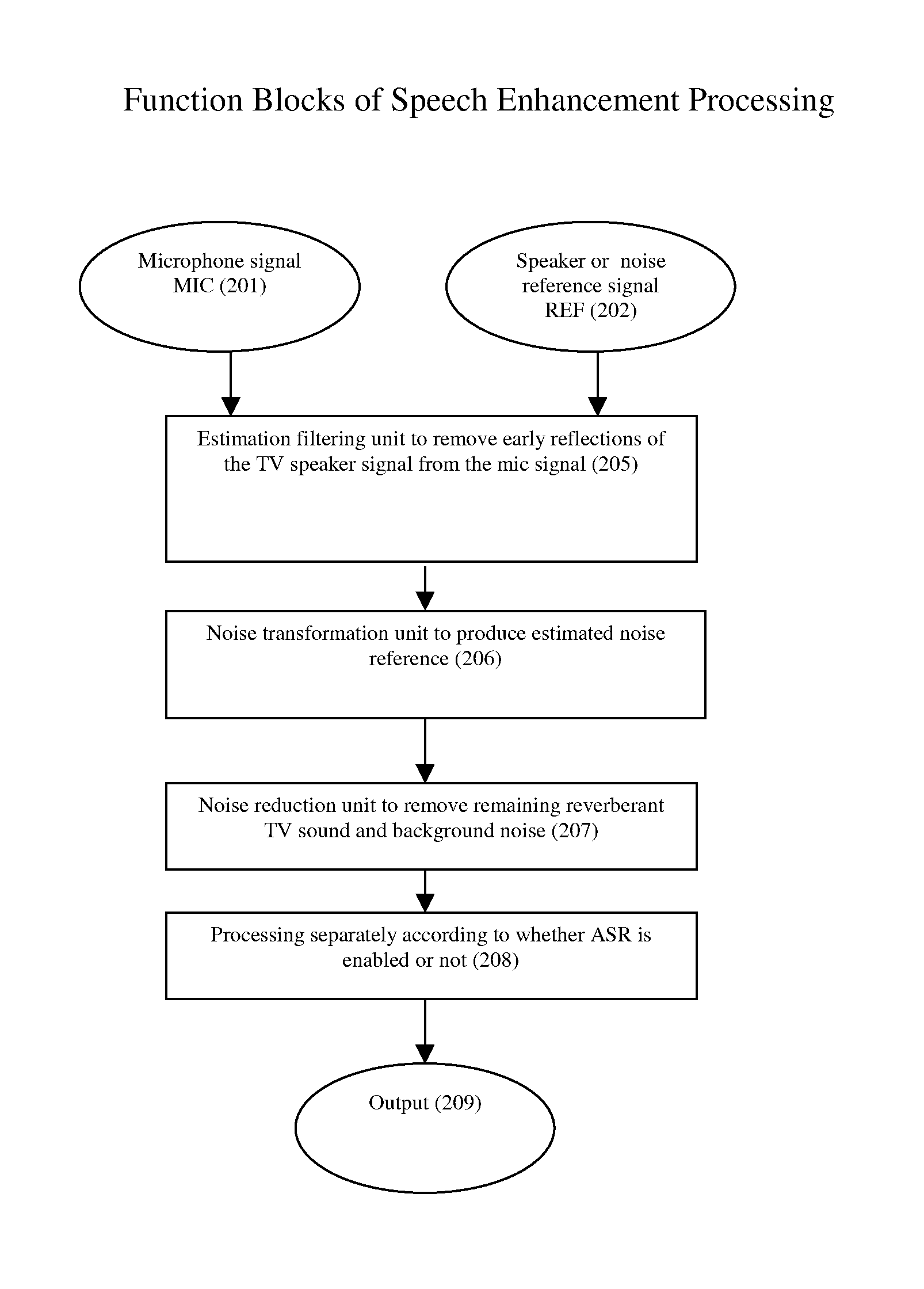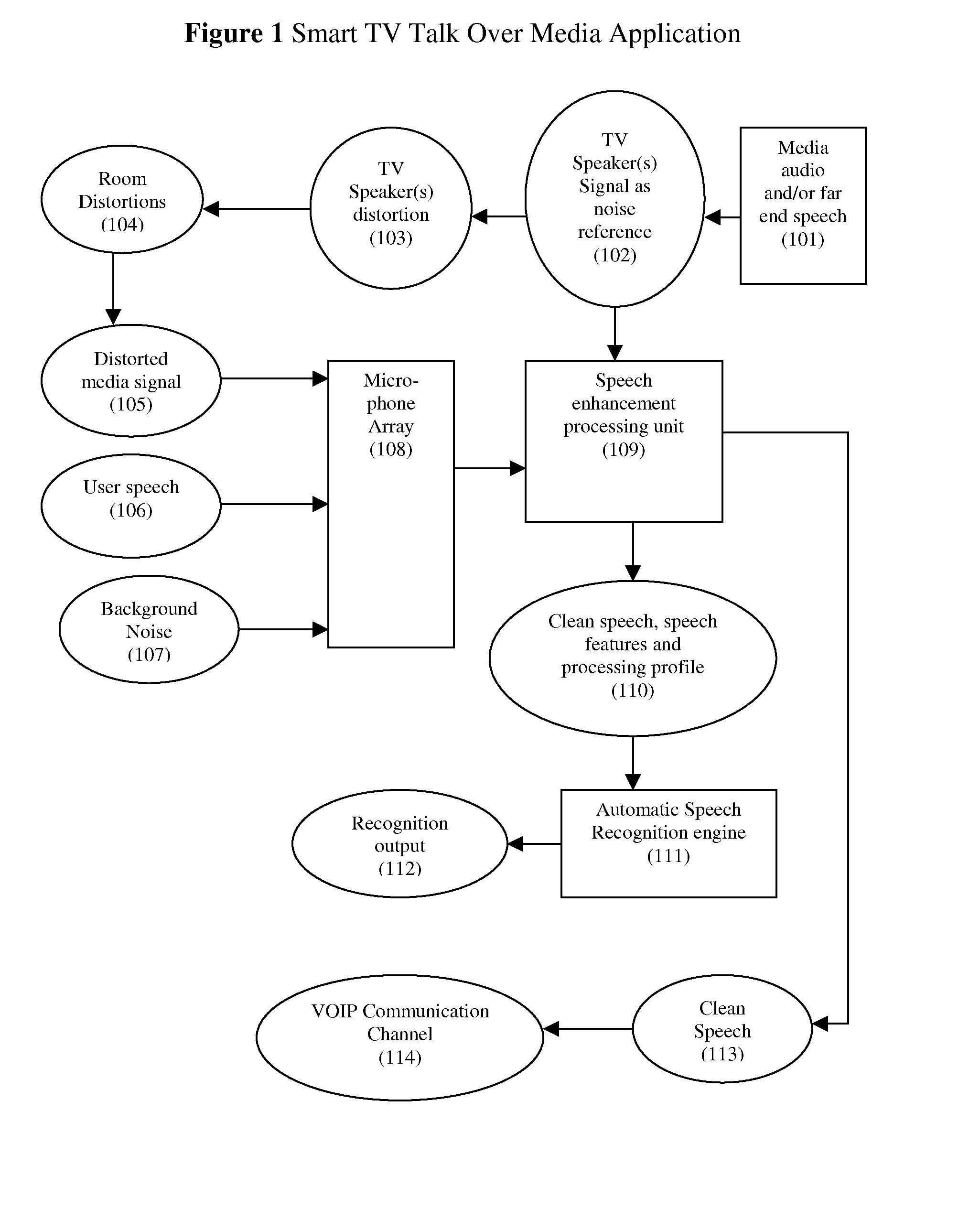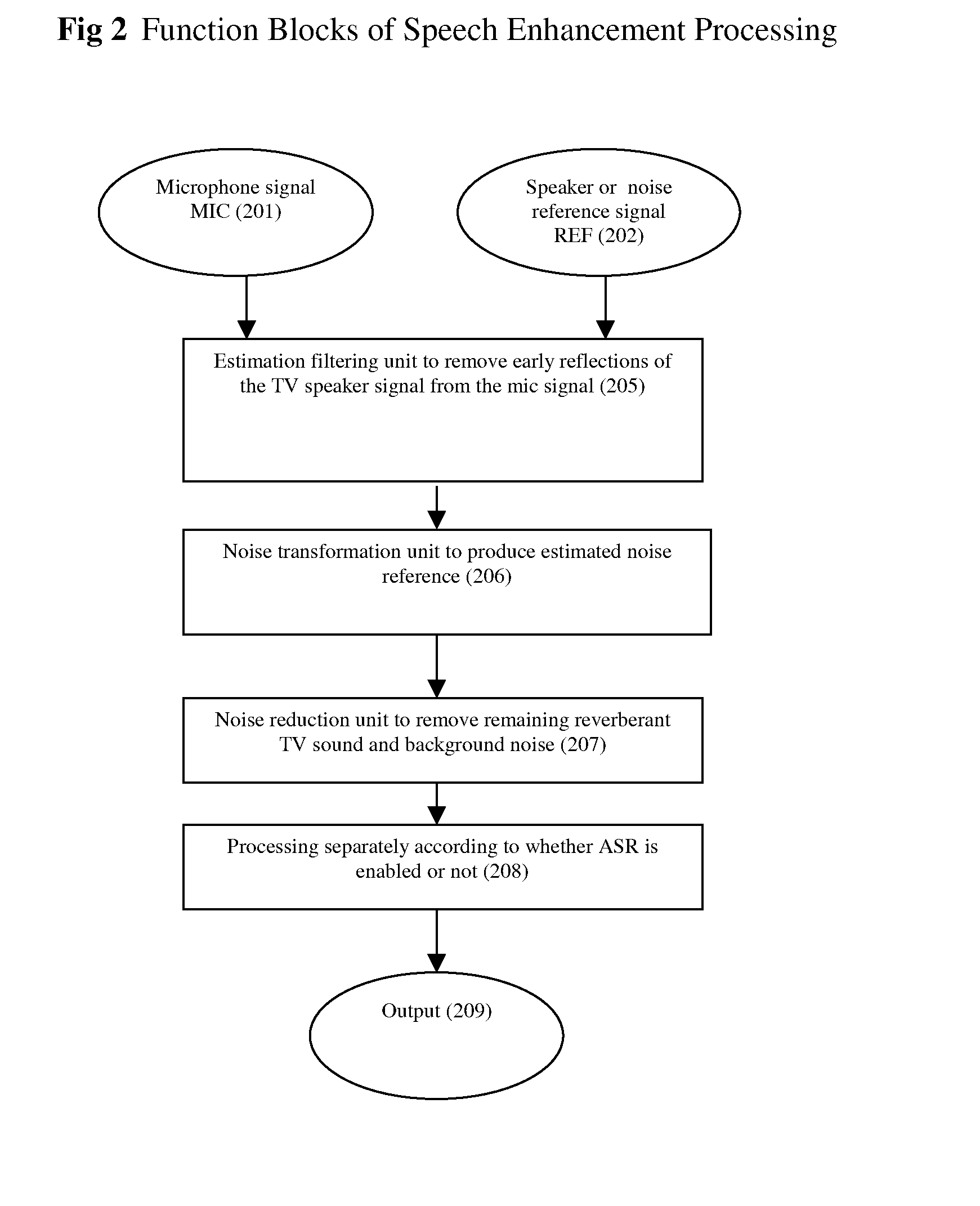Speech enhancement to improve speech intelligibility and automatic speech recognition
a speech enhancement and speech technology, applied in the field of speech enhancement, can solve the problems of affecting the accuracy of automatic speech recognition, affecting the speech quality of mobile communications and voice, and affecting the speech quality of voice recognition, so as to enhance the near-end user speech signal, enhance the speech intelligibility, and improve the detection rate of automatic speech recognition
- Summary
- Abstract
- Description
- Claims
- Application Information
AI Technical Summary
Benefits of technology
Problems solved by technology
Method used
Image
Examples
Embodiment Construction
Overview
[0020]Embodiments of the present invention not only improve the speech intelligibility, but also simultaneously provide suitable features to improve the recognition rate of the ASR.
[0021]FIG. 1 is a system function block diagram in a Smart TV talk over media
[0022](TOM) application to which the present invention may be applied. New Smart TV services integrate traditional cable TV offerings with other internet functionality which were previously offered through a computer. Users can browse the internet, watch streaming videos and make VOIP calls on their big screen TV. The large display format and high definition of the TV makes it ideal for playing internet gaming or performing video chat. Smart TVs will function as the infotainment hub for the future digital living room environment. However, complicated user menu system make the TV remote an inadequate control device. Voice control is more natural, convenient, efficient and is highly desirable. In the case where the micropho...
PUM
 Login to View More
Login to View More Abstract
Description
Claims
Application Information
 Login to View More
Login to View More - R&D
- Intellectual Property
- Life Sciences
- Materials
- Tech Scout
- Unparalleled Data Quality
- Higher Quality Content
- 60% Fewer Hallucinations
Browse by: Latest US Patents, China's latest patents, Technical Efficacy Thesaurus, Application Domain, Technology Topic, Popular Technical Reports.
© 2025 PatSnap. All rights reserved.Legal|Privacy policy|Modern Slavery Act Transparency Statement|Sitemap|About US| Contact US: help@patsnap.com



